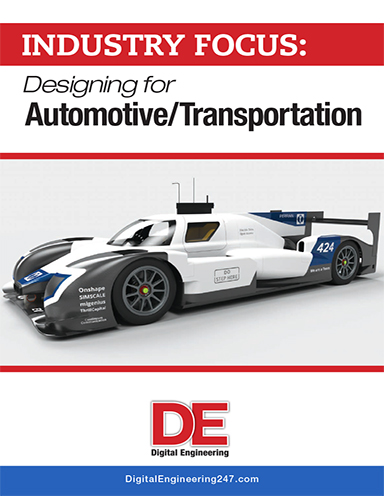Designing for Automotive/Transportation
The automotive industry is past the point of talking about the disruption coming from demand for electric vehicle powertrains or the potential of autonomous vehicles, and well on its way to responding to those disruptions thanks to advanced engineering tec

May 21, 2019
In this special digital edition on designing for the automotive and transportation industries, we have collected some recent DE coverage of those technologies, including simulation, testing, additive manufacturing and new materials.
EVs and autonomous vehicles can fundamentally drive sweeping changes across the industry: from startups who think they can be leaner than established competitors by starting from a clean slate, to “Big Auto” working together to clear standardization and regulatory hurdles, or investing in one another’s autonomous subsidiaries. For example, last month Ford Motor Co., General Motors Co. and Toyota Motor Corp. announced the formation of the Automated Vehicle Safety Consortium in conjunction with the SAE International.
There is strength in numbers and collaboration is needed to offset the complexity of both electric and autonomous vehicles. Design engineers in the trenches who are developing the software, electronics and mechanics of these new products should take heed of the C-suite’s willingness to cooperate.
Technologies that enhance collaboration among different engineering disciplines (see page 26) and with internal and external partners is key (see page 3). In fact, automakers are even collaborating with colleges and universities to help ensure the next generation of engineers has the skills they need to hit the ground running.
Latest News








